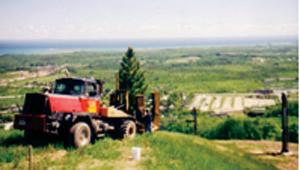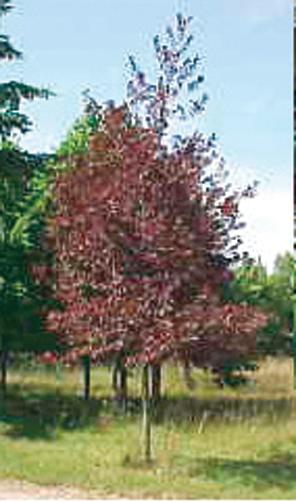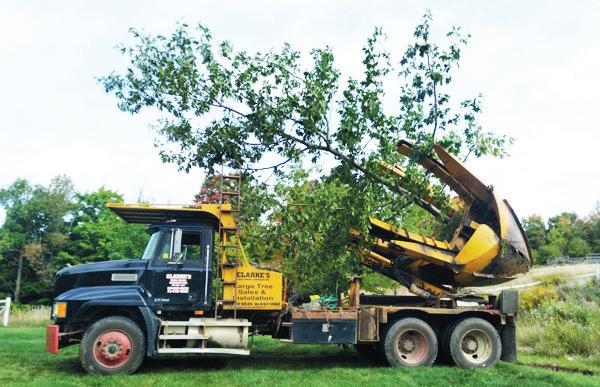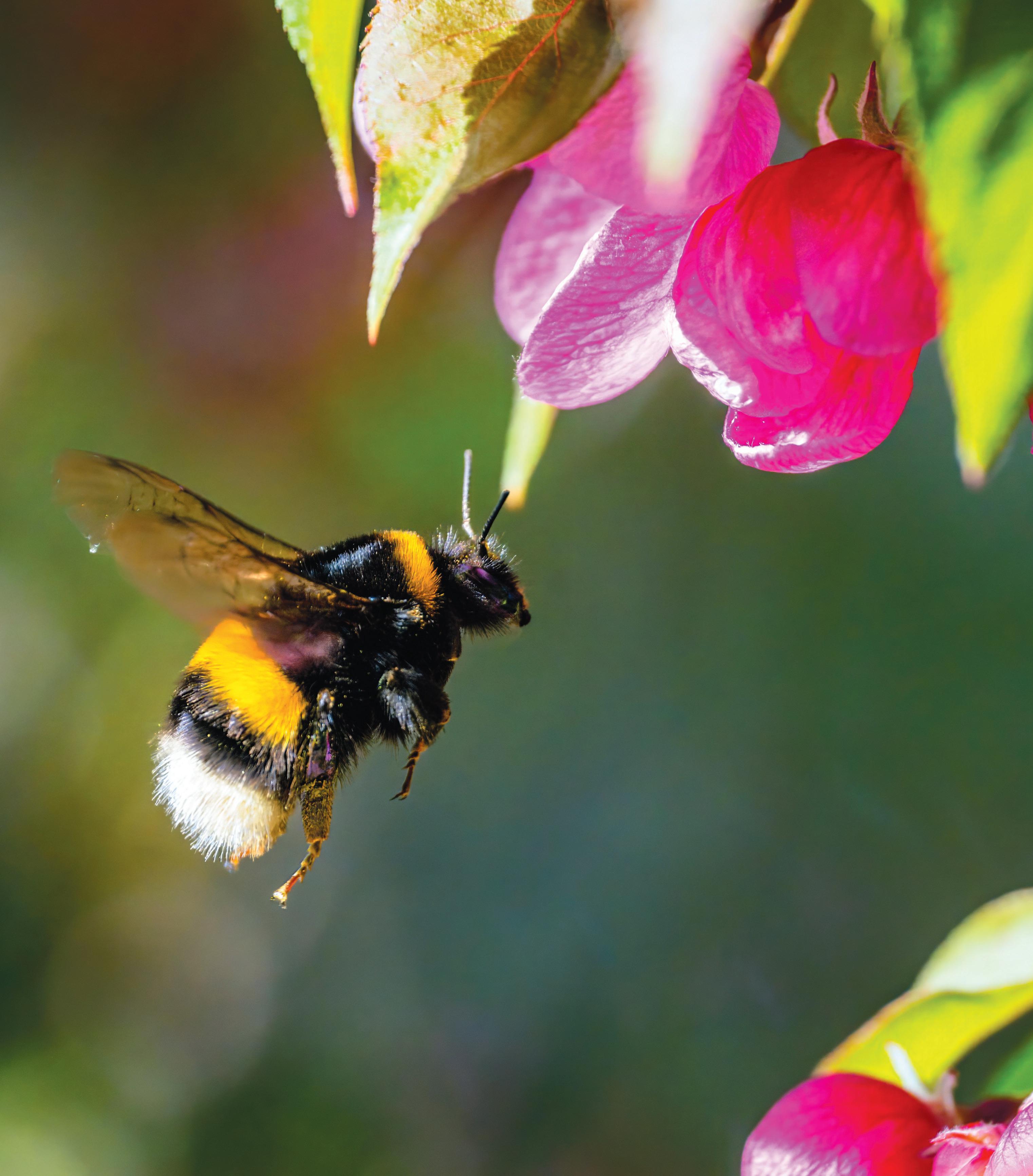

Simple Summer Snacks
Sweet, Easy Recipes to Solve Warm-Weather Hunger
(Family Features) From lazy days by the pool to weekend road trips and everything in between, summer is packed with adventures. To keep your energy high for all those warm-weather activities, you’ll need to keep sweet, delicious snacks on the family menu. Make sure versatile, flavourful watermelon is always on your grocery list so you can enjoy it for breakfast, lunch, snacks, desserts, drinks and beyond. It easily fits your existing routines for morning smoothies and snacking on the go, or in make-ahead dishes you can serve when hunger strikes.
It’s easy to cool off quickly on hot summer days with Watermelon Ice Pops, a simple, kid-friendly favourite made with watermelon and chunks
Watermelon Salad with Feta and Mint
INGREDIENTS
1/4 cup lemon vinaigrette
4 cups cubed watermelon
1/2 English cucumber cut into 1/4-inch half moons
1/2 small red onion thinly sliced
1/4 cup crumbled feta cheese
2 tablespoons fresh mint roughly chopped
Instructions
DIRECTIONS
of fresh fruit. Bursting with flavour, these frozen treats make snack time a cinch while tackling cravings, boosting hydration and supporting wellness in place of added-sugar treats.
For a light afternoon bite before the dinner bell rings, try this Watermelon Salad with Feta and Mint that offers sweet summer flavour without the hassle. Pairing long-time favourites in feta cheese and mint, it’s a classic for a reason with delicious watermelon adding nutritional content.
Of course, as a kitchen staple to keep on hand throughout the year, watermelon is also perfect for enjoying all on its own at home or on the go. Whether it’s diced, sliced, balled or blended, you can toss it in a jar for a healthy, hydrating snack.
1. Drizzle vinaigrette in bottom of large canning jar. Layer with watermelon, cucumber, red onion, feta and mint.
2. Cover tightly with lid and shake to combine. Keep refrigerated until ready to serve.
NOTES: Use Greek dressing in place of lemon vinaigrette.
Watermelon Ice Pops
INGREDIENTS
1 watermelon chunks fresh fruit such as grapes, strawberries or kiwi Instructions
DIRECTIONS
1. Puree watermelon and pour into ice pop molds.
2. Drop in chunks of fresh fruit, insert caps and place in freezer.
3. Serve when frozen.
Cutting watermelon into convenient chunks is fast and easy so you can eat at home or toss in a to-go container to take to the office, beach or soccer practice. Just cut a grid pattern on the fruit and cubes will tumble out, ready to eat. Don’t forget to wash and dry the rind on the watermelon before cutting.
1. Cut the whole watermelon lengthwise into quarters. Lay each quarter on its rind with the interior facing up.
2. Place the knife about 3/4 inch down from the peak of the wedge. Holding the knife parallel to the far side of the fruit and starting at the edge of the rind, cut a horizontal line across the fruit all the way down to the rind.
3. Place the knife blade about 3/4 inch lower and make the same cut. Repeat. Turn the fruit to the other side and make the same horizontal cuts.
4. Starting at the end of the rind, make vertical cuts straight down the rind, 3/4 inch apart all the way across.
5. Remove the cubes and serve or store in an airtight container in the refrigerator.
To find more ways to serve watermelon this summer and all year long, visit Watermelon.org.



Recipes courtesy of National Watermelon Promotion Board
Publisher’s Note


Publisher






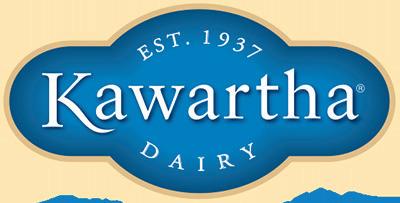

OWNER/PUBLISHER/AD SALES Victoria Ledden | 705-429-0761 | vledden1@gmail.com



The Master Gardener’s Corner
• Watch for the Japanese beetle on your Asiatic Lilies, Roses, Rose of Sharon, Dahlias, Hollyhocks, and numerous other plants. Handpicking and squeezing, combined with a beetle trap, are the most efficient ways to limit these ravaging critters. Luckily, the little red devils don’t eat Day Lilies (Hemerocallis)
• Watch for earwigs and Gypsy moth caterpillars. Spray plants with a 40:1 mixture of water and dish soap.
• Ants can also be a problem. The ant powder does not seem to work for me. Maybe the ants didn’t read the instructions to take it back to their nest.
• Trim evergreens, cedar hedges, etc., NOW as needed, not later in the summer.
• Stake straggly annuals and perennials, or pinch them back to promote new growth and make them bushy and probably re-bloom.
• Raise lawn mower blades for summer mowing. Grass should be at least 5 - 7.5 cm (2 to 3 inches) high to stay healthy and weed free.
• Prune spring flowering shrubs like Forsythia and Spirea after blooming. If you really want to be picky, remove individual spent lilac blooms.
• Water flower beds deeply and try a second round of weeding. Add mulch again to keep the weeds at bay.
• Mulch your tomato plants. When a ripe tomato drops, it won’t split or get muddy. Mulch holds moisture in too!
• Thin, hoe, weed and water vegetables as required. (This is why I stick to flowers)
• Water lawns and beds as deeply as you can.




• Tackle weeds now before they go to seed. Save yourself from weeding their offspring next year.
• Stake tall perennials that may be weakened by too rapid growth.
• Turn compost regularly and check the moisture level - not too wet, not too dry, just right….. like Goldilocks.
A big thank you to everyone who turned out for the Giant Plant Sale at St. George’s, the Anglican Parish for the Blue Mountains, in Clarksburg. First, thanks for the generous plant donors who potted up 1,242 plants from their gardens. Then to the many eager buyers who got great high-quality plants at great bargains, and finally for the many St. George’s volunteers, and the 599 Garden Club plant experts. With sales totaling over $10,000 to support St. George’s many philanthropic projects, it was a great success.
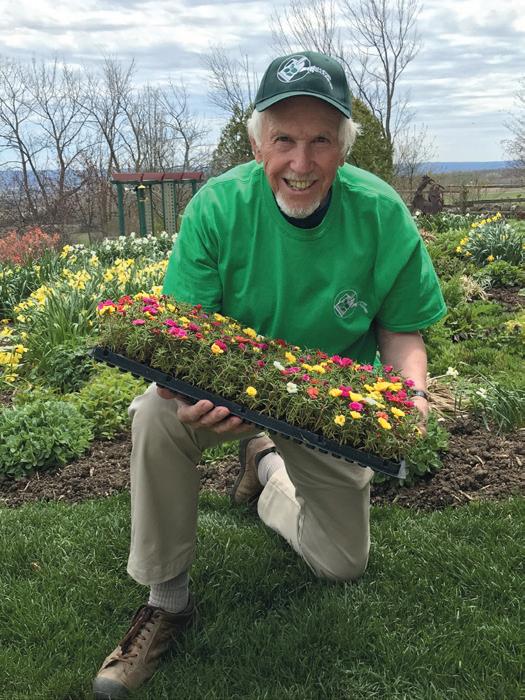
Things to do in your garden each month taken from the Ontario Master Gardener Calendar by John Hethrington, Past President, Master Gardeners of Ontario. For more information, or your copy of the 11” x 17” calendar of the full year’s tips for a $2 contribution to Master Gardeners, call 519-5995846.
Submitted
by
John Hetherington
Clap Happy
The Surprising Health Perks of Applause
A fan of music and theatre and a performer himself, our reporter Don Beaulieu heard about health benefits of clapping/applauding in the 1970s during a taping of The Ian Tyson Show. Being the procrastinator that he is, Beaulieu has finally gotten around to investigating that suggestion, over half a century later. Here’s what he found: We clap to celebrate, to encourage, to appreciate. But beyond its role in theatres. concerts or school assemblies, applauding may be doing more for us than we are aware. As it turns out, this simple, everyday gesture offers a surprising array of health benefits for the body and mind.

Clapping your hands is more than just a social cue. It involves the rhythmic movement of muscles and the stimulation of nerves and pressure points across the palms and fingers. According to traditional Chinese medicine and reflexology, many of these pressure points are connected to various internal organs. In reality, there is no strong scientific evidence that reflexology can treat medical conditions or directly affect internal organs via pressure points. So while Western science doesn’t endorse such claims, some evidence supports the idea that clapping increases blood circulation and helps maintain mobility in the hands and wrists—a gentle workout for joints and tendons, especially beneficial for older adults or those with arthritis.


The benefits aren’t just physical. Psychologically, applause triggers positive emotional responses. Whether we’re offering a standing ovation or joining in a group cheer, the act of clapping can release feel-good neurotransmitters like dopamine and serotonin. It reinforces social bonds and creates a sense of connection and shared joy—key ingredients for good mental health.


We’ve known for ages that music is good for the soul. These audience members, seen at a taping of the Ian Tyson Show in the 1970s, were unknowingly gaining health benefits from applauding stars such as Dolly Parton, The Stampeders, Johnny Paycheck & the Cashiers, Miles & Lenny and so many more performers!

Group clapping, such as in concerts or community gatherings, has a synchronizing effect on people’s movements and emotions. This kind of collective rhythm promotes unity and boosts collective morale. Essentially, it feels good to clap together.
Some cultures have long treated clapping as a healthful activity in itself. In India, for example, clapping is part of morning wellness routines and laughter yoga practices. Advocates say it helps stimulate the immune system, enhance lung capacity (especially when paired with breathing exercises or vocalization), and energize the body. Claims of clapping stimulating the immune system have not been substantiated by rigorous scientific research. Are there any risks to clapping? Very few. Unless you’re applauding for hours at a sports event or concert, or clapping with excessive force, the risks are minimal. People with joint sensitivity or wrist conditions might want to be gentle, but for most of us, clapping is entirely safe and healthy.
So the next time you find yourself clapping—for a performance, a speech, a friend’s good news, or even just to lift your own spirits—know that you’re doing your mind and body a small favour. Sometimes the simplest gestures are the most powerful. Go ahead—clap like you mean it.
Submitted by Don Beaulieu





Home & Garden
Why You Need to Feed Your Garden
(NC) Just as people need an adequate and consistent diet to grow and stay healthy, plants also need proper nutrition. As plants grow, they extract nutrients from the soil. Those nutrients need to be replenished. Fertilizer is food for plants, providing them with these important nutrients. For the most lush, green garden with strong, healthy leaves and root systems, it is important to feed your plants, and to do it right. Simply follow the 4Rs: the right source at the right rate, the right time and the right place.

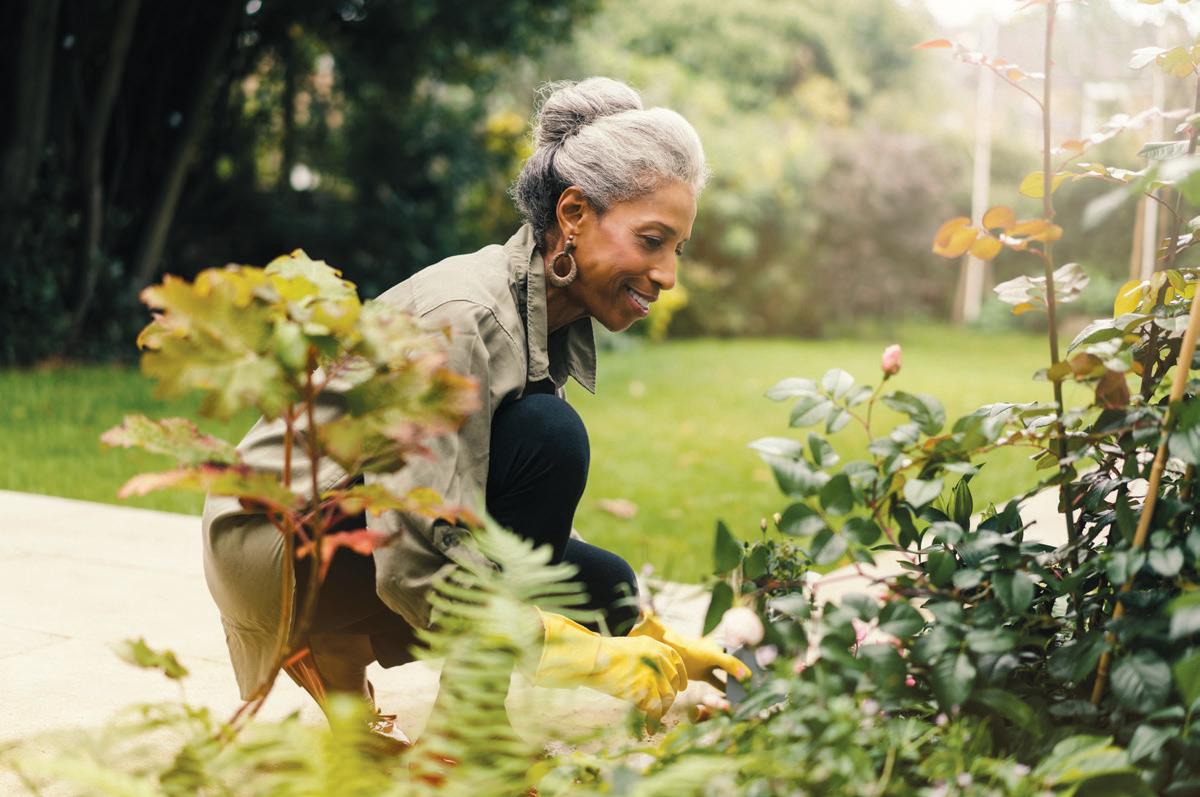
THE RIGHT SOURCE When reviewing fertilizer, you’ll notice it has three numbers on the bag. This indicates the ratio of the three main fertilizers inside: nitrogen, phosphorus and potassium (NPK). For example, if the bag says 21-4-3 it contains 21 per cent nitrogen, 4 per cent phosphorus and 3 per cent potassium. Nitrogen is important for boosting growth and green colour, phosphorus feeds seedlings and fosters new root growth, and potassium is important for all-around health and protects against disease and stress.
THE RIGHT RATE Follow the instructions on the bag and don’t be heavy-handed; more is not always better. Using a fertilizer spreader on your lawn will help disperse it evenly. Uneven application can result in variations in colour or burning if overapplied. Never spread fertilizer by
Embrace the Space
hand. There are granular and watersoluble fertilizers available for use in your garden.
THE RIGHT TIME Fertilize your lawn every other month beginning in April, or when it begins to get green, and continue into the fall before the ground freezes. Fertilize your garden with granular fertilizer monthly or weekly with a water-soluble product.
THE RIGHT PLACE Follow the instructions on the package and use the appropriate tools to ensure the fertilizer is in the optimal place for the plant. Avoid applying fertilizer before heavy rain to ensure the nutrients stay in the soil where the plants can feast on them.
If you have leftover fertilizer, you can use it, share it or store it. Consistent fertilizing helps plants develop strong, healthy root systems that make them resistant to heat, drought and wear. Sharing fertilizer with family, friends or neighbours helps them grow beautiful, lush lawns and gardens. Store fertilizer in a dry place out of direct sunlight in the same packaging it came in.
Growing a green, lush garden is easy when you follow the 4Rs. Find more information on lawn care at fertilizercanada.ca/lawncare.
(NC) Many of us don’t realize that the space under our backyard decks can offer tremendous potential. With a little creativity and the simple addition of an under-deck drainage system, the area can be used for anything from additional living space to waterproof storage.
Here are five different ways to embrace the space beneath your home’s deck:
DINE AL FRESCO. An al fresco dining area takes any meal from ordinary to extraordinary. Think beyond the traditional grill and patio furnishings to create an elegant, open-air gathering spot below the deck, complete with a large dining table and cozy area for post-meal stargazing. Incorporate soffit lights into the ceiling to enhance ambiance and extend the usability of the space.
GRILL IN THE GREAT OUTDOORS. From block parties to birthday barbecues, there’s no need to miss a moment of fun with a fully equipped outdoor kitchen. With an under-deck drainage system like Trex RainEscape, which uniquely installs above the joists of the deck, gas lines and electrical wiring can be run safely and discreetly between the surface and a soffit ceiling to accommodate whatever may be on the menu.






WEATHERPROOF WATCHING. Outdoor fun is no longer at the will of the weather forecast. Whether you’re looking to catch a big game or catch up on the latest bingeable show, nothing beats an open-air entertainment area outfitted with all the comforts of home, just steps away from refreshment refills and bio-break facilities.
STORE WITH STYLE. When properly shielded from the elements, the space beneath a deck is ideal for year-round storage. Seasonal items such as pool equipment, patio furniture and yard games can be safely tucked away—protected from animals, insects and moisture. Depending on size, this area can even be used to house grills, lawnmowers, bicycles and recreational vehicles.
YEAR-ROUND RETREAT. With a deck drainage system in place, you can outfit this outdoor space just like you would any interior room. Add walls, windows, a ceiling fan and comfortable upholstered furnishings to create a stunning all-seasons room where you can watch Mother Nature’s ever-changing beauty year-round. Find more outdoor inspiration at trexrainescape.com.

& Garden
Tips to Spruce up Your Home This Summer

(NC) Summer is a perfect time to enjoy the warm weather with family and friends, and it’s also an ideal season for home improvements. Whether you’re looking to increase your home’s value, make eco-friendly upgrades or simply enhance your living experience, here are a few handy renovation tips to consider.
SEAL THE GAPS. Summer heat can drive up energy costs, so focus on making your home more energy efficient to keep it cool and reduce air conditioning costs. Have a maintenance professional inspect all walls for any cracks that need to be sealed to keep water out and avoid major damage. Upgrade insulation and seal any drafts to prevent cool air from escaping and replace any shingles on your roof that are broken or loose to avoid water leaks.
UPGRADE YOUR LIVING SPACE. If your budget allows, consider updating your kitchen, bathroom or living spaces. These are high-traffic areas that significantly impact your home’s value. Even small changes like new cabinet hardware, recessed lighting or a stylish new backsplash can transform a space.
GET OUTDOORS. Take advantage of the warm weather by enhancing your outdoor spaces. Start by power-washing your deck or patio to remove dirt and grime. Consider staining or sealing the wood to protect it from the elements and give it a fresh appearance. Adding some comfortable outdoor furniture, colourful cushions and a few potted plants can transform your backyard into a cozy retreat.
INSTALL ENERGY-EFFICIENT FIXTURES. Replace old incandescent light bulbs with LED bulbs, which use less energy and have a longer lifespan. Consider installing a programmable thermostat to better manage your cooling system and help save on energy bills. Ceiling fans are also a great addition to keep air circulating and reduce the need for air conditioning. These simple upgrades can lead to significant savings and increased home comfort.
IMPROVE INDOOR AIR QUALITY. Start by changing the air filters in your HVAC system to ensure better airflow and air quality in your home. Consider adding houseplants, which naturally purify the air and add a touch of greenery to your decor. Plants like spider plants, peace lilies and snake plants are especially good at removing toxins from the air. Don’t forget to turn on the exhaust fan in your kitchen and bathrooms to reduce humidity and prevent mould growth.
If you’re thinking of starting some bigger projects this summer, it’s important to let your insurance provider know to ensure your policy remains in effect.
There may be additional insurance implications if certain work, like electrical or plumbing, isn’t done by licensed professionals.
Additionally, renovations that increase your home’s value may also affect your insurance. Whether the project is big or small, be sure to get a quote for any new coverage. Companies like Belairdirect can provide a quote in minutes and help you along every step of the way. Learn more at belairdirect.com.









ALONE ON BLUE MOUNTAIN, AT NIGHT
The moon is cold and clear across the waters of the Bay
The hand of night lies heavy on the land
The darkling shadows flow across the Mountain’s forested breast
As I stand high above the silver strand
The sparkling lights of houses strewn across the shadowed vale
Like fireflies, hold the creeping dark at bay
The moving twinkle-twinkle of the headlights of a car
Pass down a road, and slowly fade away
The tiny, twinkling stars are wheeling high above my head
Like Fairy-dust, fresh-sprinkled ‘cross the sky
The Constellations hang there, as they have for eons gone
Like pictures to this lone observer’s eye
What am I doing standing here, so high up on the hill
Alone in darkness, watching night draw nigh
The silence is a tonic, a relief from crowds and noise
My spirit, freed of noise, can freely fly
There are not so many places in our world so civilized
Where a man can stand, and let his soul fly free
Too many loud intrusions on the silence of our hearts
The IRON CHAIN, Responsibility
Sometimes I need to come here, to clear my troubled mind
To watch the stars, and see the lights of town
An hour or two of gazing at the world I cannot change
Can ease my mind, and calm my spirit down
Robert G. Adams - May, 2000

I stand within the forest of people Watching Listening
I stand tall carrying the scars of life Knowing That I’ll stand taller tomorrow Still alone.... Watching and listening While the forest struggles... To exist!
David Young

Growing Young Together In Each Other’s Arms... Best Friends As You Build, Grow, Achieve In Life’s Challenges & Adventures... We Are The Betterment For Each Other... Profound Love, Profound Happiness... How Truly Pure, Raw & Wonderful... Love In Us Is Beautiful
Wendy D Pogue
Poetry Corner
ON A BRAZEN ESCAPE
He looks about seeing bars, That is what you get for stealing cars, For days he has planned, His surroundings he has scanned, To determine how to get out, For this is the night for breakout, Secretly the cell bars have been sawed, He is tired of eating food rawed, So now the inmate moves the bars one by one, Doing so is not fun, Eventually three bars are freed, He climbs out on his knee, Then gets down, Hearing no sound, He must move before they release a hound, He runs to and daringly climbs a gate, And runs into the night- on a brazen escape.
RYAN P. BARNETT
Fun Fact
A POT OF BOILING WATER DOESN’T DISAPPEAR IN AN INSTANT.
We all know that water boils at 100°C (212°F)—so why doesn’t a pot of water just vanish the moment it hits that magic number?
Turns out, boiling is a more patient process than you may suspect. Let’s dive into the science (without getting your socks wet).
Boiling point ≠ instant evaporation
When water reaches 100°C at sea level, it’s officially boiling. But that doesn’t mean it instantly flashes into steam like some kind of culinary magician’s trick. Instead, it begins to boil—slowly and steadily. You’ll see bubbles form and steam rise, but the water itself is in no hurry to leave the pot. Why? Because of a secret energy toll. Shhhhh.
The secret cost: Latent heat of vaporization
Every time a molecule of water wants to leave the liquid and become vapour, it needs a ticket out—and that ticket costs energy. A lot of it.
To be precise, each gram of water at 100°C needs about 2260 joules of energy to turn into steam. That’s called the latent heat of vaporization—and it’s energy that goes into changing the water’s state, not its temperature. So even though the water is hot enough, it needs extra energy to break free from the crowd.
Your Stove Works Hard… But Not That Hard
Let’s say your stove-top burner puts out 2,000 watts (which is 2,000 joules per second). That might sound powerful—but to boil away just 1 litre of water, your stove needs to deliver roughly 2.26 million joules of energy. Even at full blast, that would take over 18 minutes!
Multiply that by a bigger pot, and now you know why a whole soup pot doesn’t turn into steam the moment it starts bubbling.
Bonus comparison: Ice does this too
Ever notice how ice takes forever to melt, even once it’s “warm enough”? That’s because melting ice also needs latent heat—it’s the same concept! Whether you’re going from solid to liquid or liquid to gas, phase changes always come with an energy price tag.
In summary: Boiling is a gradual process
Water doesn’t vanish the instant it boils because:
• Boiling starts at 100°C, but it doesn’t mean instant vapour.
• It takes a lot of energy to turn liquid water into steam.
• Your stove adds energy gradually, not all at once.
So the next time you’re waiting for pasta water to boil off, just remember—physics is at work, one bubble at a time.









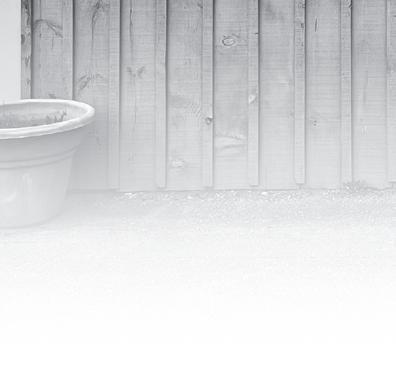







Submitted by Don Beaulieu
Shut Up and Listen
Nature’s Been Trying to Tell You Something
If you’ve been following along, you already know I’m not here to sell you some mystical forest fantasy. In the first two articles of What’s Up?, we kept it real, talking about how Nature isn’t just a backdrop for your Instagram feed. It’s one of the best tools we have for clearing our heads and reconnecting to what matters. We looked at how simply getting outside—no Wi-Fi, no to-do list— can make a world of difference, and how Nature’s calm, steady presence has a way of reminding us who we are when life gets noisy.
And we’re just getting started.
Over the next few issues, I’ll be diving deeper, sharing bite-sized insights and quotes pulled straight from the 31-day challenge in my book Shut Up and Listen. Think of it like trail mix for the soul—small, satisfying, and meant to fuel you forward. So whether you’re skimming this from the couch or reading it under a tree, stay with me. There’s a lot more Nature wisdom (and real-life magic) coming your way.
But first—Why Bother?

Why follow along with this Shut Up and Listen series? Because life gets overwhelming—and sometimes we need a simple, steady reset. Each month, I’ll be sharing a down-to-earth dose of Nature wisdom—something small but mighty to help you stress less, think more clearly, sleep better, and maybe even get some of that lost energy back.
Nature’s been mastering the art of balance way longer than we have, and it’s been quietly dropping hints all along. This series just helps you start noticing them.
So take a breath, step outside, and remember: Nature’s got a lot to say. The smartest thing you can do is Shut Up and Listen.
Let’s Kick Things Off
Now that we’ve covered the why, it’s time to jump into our first monthly dose of wild wisdom. We’re starting with one of my favourites: a reminder that not everything that stands out is a problem… sometimes, it’s a hidden gift.
WILDFLOWER – NOT A WEED!

Ever feel like you’re the dandelion crashing a rose garden party? The one plant that shows up uninvited, rocking a scrappy charm that’s totally underrated? You’re basically the unsung hero of Nature’s lineup— misjudged, but surprisingly essential.
Here’s the twist: a dandelion isn’t a “weed.” It’s a wildflower with big plans. Pollinators love it. It’s edible. And as a kid, you probably felt like a master florist handing a bouquet of them to your mom. Sure, roses are elegant, but can they grant wishes when you blow on them? Didn’t think so.
What’s the moral of this wildflower tale? Own your quirks. The things you think make you stick out might be exactly what the world needs more of. Some call it being “different.” Nature calls it balance.
Ask yourself: What’s one so-called “flaw” that might actually be a secret superpower?
Remember, a dandelion isn’t a weed. It’s just a wildflower waiting to shine.
TAKE ACTION - LET YOURSELF BLOOM!
Spot the “Weeds”
Start by identifying something about yourself you’ve always seen as a flaw. Maybe it’s your quirky sense of humour, your tendency to overanalyze, or your unmatched ability to trip over flat surfaces. Write it down. Remember— today’s “weed” might just be tomorrow’s blooming wildflower.
Change the Lens
Now look at this “flaw” differently. What’s a redeeming quality in it? Maybe your overanalyzing makes you a master problemsolver. And that tripping? Clearly, you’re destined for a career testing anti-slip footwear. Dandelions feed pollinators and make tea—your quirks probably have hidden value too.
Pollinate the Positivity
Share your new perspective with the world. Not literally—no need for a TED Talk about your tripping habits—but try leaning into your uniqueness today. You might be surprised how people respond when you own who you are.
Jot It Down
Make a short list of your “wildflower” traits and how they make you shine. Bonus: draw a dandelion next to it for artistic flair—even Picasso had to start somewhere.
NATURE’S WAITING
Unlocking Nature’s wisdom is like finding the secret door to a calmer, clearer you. A little time outdoors can lower stress hormones, reduce anxiety, and even lower blood pressure. It clears out the noise, kicks stress to the curb, and gives you a confidence boost you didn’t even know you needed.
And that’s exactly why this column exists. Keep tuning in each month as we crack open more of Nature’s code and start showing up as the best version of ourselves—wild bits and all.
Raven is an inspirational speaker, author, storyteller, and educator whose deep love for Nature winds through everything she creates. From guiding immersive outdoor retreats and leading down-to-earth workshops to producing story-rich albums and podcasts (available on all major platforms), her work is all about helping people unplug from the noise and reconnect with what really matters.
Her latest book, Shut Up and Listen: A No BS Guide to Unlocking Nature’s Wisdom in 31 Days, is now available at Amazon.ca and through her website at www.ravenspeaks.ca, where you’ll find everything she offers—all in one place.
Submitted
by Raven Murphy

Hot Weather Pet Safety
Extra precautions should be taken during hot weather to keep your animals safe. Even a short time in a hot environment can be life-threatening for your pet. Limit the length of time spent outdoors, never leave an animal unattended in a vehicle, and ensure animals always have sufficient water and a cool, sheltered place out of direct sun.
GENERAL HEAT SAFETY TIPS
• If you are travelling with your pet and can’t take them inside with you when you leave your car, leave them at home where they are safe.
• Take dogs on walks in the morning or evening when the temperature is lower and reduce outdoor playtime during the day.
• Test the pavement on sunny days using the back of your hand or wrist. Pavement can get very hot and burn the pads on your dog’s feet.
• If you do not have air conditioning at home, provide a fan to keep your pets cool and comfortable. Close the curtains in your home to keep the temperature lower inside and give animals access to a cool room within your home. Spaces with bare floors are ideal, as they provide a cool place for your pet to lie down.
• Limit the amount of outdoor activity provided to early morning or evening when it is cooler and keep dogs on leash to prevent them from running, leading to overexertion.
HEATSTROKE
It’s important to watch for signs of heatstroke, which can include excessive panting and drooling, listlessness or unconsciousness. If heat stroke is suspected, prompt veterinary medical attention is vital.
• To help cool the animal, wet the fur immediately with lukewarm to cool water, not cold water. Bring the pet into the shade and offer drinking water.
• Even if your dog cools down, take him to a vet as soon as possible as some medical problems caused by heatstroke may not show up right away.
• Certain types of dogs, such as Northern breeds or short-muzzled dogs can have a more difficult time in the heat. Dogs that are older, overweight, taking certain medications or with certain medical conditions are also more susceptible to heat exposure. If you have concerns about the welfare of an animal, call the government’s animal protection hotline at 1-833-9ANIMAL or your local police. If the animal is in distress, call 911 as this is an emergency. For more hot weather pet safety tips, visit ontariospca.ca. Remember, if it’s too hot for you, it’s too hot for your pet!
Courtesy
of Ontario SPCA and Humane Society
Sweetpotato Summer Slushie
Recipe courtesy of the NorthCarolina Sweetpotato Commission
INGREDIENTS
Instructions
1 cup Sweetpotatoes cooked and mashed
1 cup pineapple juice
1/2 cup orange juice
1/4 cup lemon juice
1/4 cup coconut milk
2-3 tablespoons simple syrup or honey adjust to taste
1 teaspoon vanilla extract
2 cups crushed ice
2 ounces spiced rum coconut rum or bourbon (optional) pineapple slices or orange wedges for garnish (optional)
DIRECTIONS






1. In blender, blend sweetpotatoes, pineapple juice, orange juice, lemon juice, coconut milk, simple syrup or honey, vanilla extract and ice until smooth and slushy.
2. Pour into glasses and serve.
3. For alcoholic version: Add spiced rum, coconut rum or bourbon after blending. Pulse in blender or stir after blending for layered effect.





Mind. Body. Spirit.
Communicating with Your Teen
Oftentimes, communication between teens and their parents lacks the depth required to build any sort of lasting trust and understanding. Parents are left in a grey area while they attempt to come to terms with their new normal. The teens on the other hand, might act out in ways that the parents aren’t prepared to deal with. In both cases, neither is better off and an educated and structured approach to bridging the gap is paramount.
Here are 11 proven strategies to aid in open communication between teens and parents:
1. Create a Safe Environment: Make it clear that home is a judgmentfree zone. When teens feel safe expressing their thoughts and emotions, they will be more approachable and relaxed.
2. Be Approachable: remain calm and relaxed. Show that you are available to talk. Use positive body language and a friendly tone to invite conversation.
3. Ask Open-Ended Questions: Encourage discussion by asking questions that cannot be answered with a simple yes or no. For example, “What was the best part of your day?” or “How do you feel about your classes this semester?”.
4. Active Listening: Show genuine interest in what your teen is saying. Acknowledge their feelings and respond thoughtfully, which demonstrates that you value their perspective.

Hunter Registered Psychotherapist

5. Share Activities and Time: Enjoy activities that are interesting to both parent and teen. Things like cooking, sports or volunteering together. Designating a regular one-on-one time to share will create more opportunities to bond and share conversations - this could include going for a coffee or a walk. Of course, setting aside time for family gatherings is also important. Things like games or movie night, playing a sport together or going hiking are a few backdrops that create great memories.
6. Limit Distractions: During conversations, minimize distractions by setting aside phones and other devices. This shows your teen that they are important to you and you value their time.
7. Practice Patience: Understand that some topics may be difficult for teens to discuss. Give them time to articulate their thoughts and feelings and avoid pressing them to share before they’re ready. This aligns closely with #1.
8. Be Honest and Transparent: Share your thoughts and feelings openly. When parents are genuine and vulnerable, it encourages teens to reciprocate.
9. Respect Boundaries: While it’s important to stay connected, respecting your teen’s personal space and privacy fosters trust and encourages them to open up on their own terms.















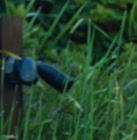




























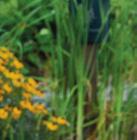












10. Validate Their Feelings: Even if you don’t agree with their viewpoint, acknowledge their feelings. Let them know it’s okay to feel how they feel, which encourages further sharing.
11. Encourage Problem-Solving: When discussing issues, guide rather than dictate. Encourage your teen to propose solutions and discuss potential outcomes together, encouraging collaborative communication.
By considering these strategies, parents can create open communication between themselves and their teens. This will allow opportunities for teens to express themselves freely and will result in a more supportive relationship.
If you would like to discuss any issues you have communicating with your teens, I’m here to help. Call me at 705-794-5307 or email me at whunter63@gmail.com.
Wendy Hunter, RP Registered Psychotherapist

How to Build and Support Muscle
(BPT) - Whether you’re an everyday athlete or weekend warrior, working toward your weight loss goals or hoping to maintain your strength and balance as you age, you probably know how vital muscles are.
You may also know that protein plays a big role in building and maintaining muscle, but you may be unsure how much you need. Protein is essential for tissue repair, hormone and enzyme production, and overall metabolism. Yet, because requirements vary according to age, sex, body composition and activity levels, many adults may not be meeting their individual needs.
“Ensuring adequate protein intake is crucial for overall health, particularly in terms of muscle development and maintenance, and it also plays a role in healthy weight management,” said Registered Dietitian Susan Bowerman, senior director, Worldwide Nutrition Education and Training at Herbalife and chair of the Herbalife Dietetic Advisory Board. “When prioritizing fitness, it’s important to meet specific protein requirements from a variety of sources and to evenly distribute protein consumption throughout the day, to support muscle protein synthesis.”
In honour of World Protein Day, Bowerman shares tips on how to boost protein intake and what to look for in a protein supplement.
PROTEIN NEEDS CHANGE WITH AGE As you age, your body’s ability to use protein declines, which means you need a higher intake to maintain muscle mass and overall health. Older adults should aim for a minimum of 1.0-1.2 grams of protein per kilogram of body weight per day to support muscles and health. Higher amounts may be needed to support the needs of physically active older adults or those with particular health conditions.
TAP INTO PLANT PROTEIN A well-balanced mixture of plant proteins can provide ample high-quality, complete protein. Plant proteins are found in soy foods, beans, peas, lentils and whole grains - which also provide important vitamins and minerals. However, protein intake recommendations for vegans and vegetarians are about 10% higher than for those whose diets contain animal protein. Products like Herbalife’s Protein Drink Mix Select contain 15 grams of easily-digestible protein from a blend of pea, rice and quinoa, and can help you get the necessary protein when following a plant-based diet.
MILK PROTEINS CAN BOOST MUSCLE GROWTH Milk proteins - whey and casein - are good sources of a particular set of amino acids that are well-suited for promoting muscle protein synthesis. They’re rapidly taken up by cells, which is why they’re often recommended as the perfect post-workout option. If you don’t prefer dairy, choose proteins that deliver all the essential amino acids in sufficient quantities, or consider a supplement made from a blend of plant proteins, such as pea, pumpkin seed and chia seed.
SUPPORT HEART HEALTH Since plant proteins are naturally cholesterol-free and generally much lower in saturated fats, swap animal proteins for plant-based options when possible in order to help keep your cholesterol and blood pressure in check, which helps reduce your risk for heart disease. Some plant proteins come packed with fibre and antioxidants, which are also heart healthy.
BOOST PROTEIN INTAKE WITH SUPPLEMENTS Getting enough protein each day is only part of the challenge. Studies show that consuming protein in amounts that are evenly distributed throughout your day is more effective for muscle protein synthesis than having varying amounts at each meal. Aim for 20-40 grams of protein per meal (depending on your daily needs). This can be especially challenging for some meals, like breakfast, which is often a lower protein meal. Protein supplements can help you achieve your ideal protein intake and ensure it’s more evenly distributed throughout the day.
Find wellness resources to guide your journey to better well-being at Herbalife.com/en-us/wellness-resources, and explore Herbalife’s protein offerings at Herbalife.com.
Wasaga Beach Denture Clinic




Implant Dentures Available
We do Housecalls and Nursing Home Visits Need a new smile? Let us give you one of ours.
Carlos Melgarejo DD 705-429-8474 1-888-531-6290
682 River Rd. West (Hwy 92) Wasaga Beach wasagabeachdentureclinic.ca






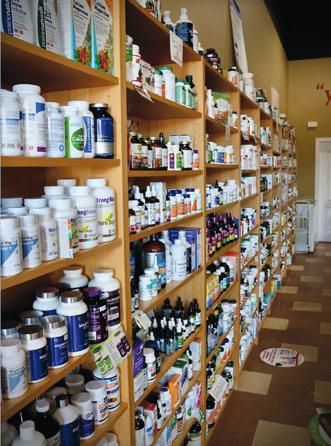





SUMMER WHEELS


6 Elgin St. S, Thornbury 519-599-2010 www.carquestthornbury.ca
NEW LOCATION:
206034 ON-26, Meaford 519-538-2311 www.carquestmeaford.ca
For all your automotive parts and accessories

(NC) The destination is set, the route planned out and playlist sorted—but before you pack up and leave on that summer road trip, don’t forget to ensure your vehicle is ready. After all, car trouble can stop your trip right in its tracks. Ensure smooth sailing on your next adventure by following these tips.
CHECK YOUR TIRES.
Before heading out, check the condition and inflation pressure of all four tires. Adjusting inflation pressure to proper levels helps your car handle better and achieve better fuel mileage. Also, take a look at your spare tire to ensure it isn’t flat or damaged.
PREP YOUR WINDSHIELD AND WIPERS.
Clean your windshield inside and out to ensure a clear view of the road. Top up windshield washer fluid with a quality, summer-rated product and make sure your windshield wipers are in good condition.
CHANGE YOUR OIL.

Changing your vehicle’s motor oil before a road trip ensures optimal engine performance, prevents overheating and increases fuel efficiency, making your journey smoother and more reliable. Look for a quality product, like Pennzoil Platinum Full Synthetic motor oil, to maximize your engine protection and help extend your engine’s life.
CLEAN AIR FILTERS.
A blocked or clogged engine air filter will decrease performance, lead to poor fuel economy and possibly lead to more serious engine trouble. Check that it is clean or replace it with a fresh, new one for improved performance and reduced fuel consumption. Check the cabin air filter to keep your AC working in good order.
TEST YOUR BATTERY.


Testing your car battery before your summer travels is an excellent way to maximize peace of mind. If the battery in your car doesn’t pass the test, it may be time for a replacement.

Tip: Motor oil manufacturers, like Pennzoil, often have promotions available for you to take advantage of. Always check the company’s website before you buy.
Singing Without Words
The Human Side of Sound
Ever wonder what musical instrument most closely resembles the human voice? We often say a strong singer has “good pipes”. But our voices work with a process strikingly similar to how a reed vibrates in instruments like the clarinet, saxophone, or oboe. But as for the original question, the answer may lie not in pipes or reeds, but in strings.
The violin, with its sweeping range and emotional flexibility, is often described as the most vocal of all instruments. It doesn’t just play notes—it sings. From the aching glide of a glissando to the trembling nuance of vibrato, the violin can cry, plead, rejoice, and mourn with remarkable likeness to a human voice. Musicians and composers alike have long leaned on its ability to mimic our deepest feelings, often writing violin solos that sound more like operatic arias than string music. Music therapist and respected local fiddle player Eswyn Ruth Francis-Lyster says: “I believe the violin represents, pitch-wise, most humans’ natural voice registers, different than a lower-pitched or higher-pitched instrument”. But the violin isn’t the only voice-like instrument in the orchestra. The cello, often described as echoing the richness of the human male voice, brings a warm, resonant depth.
In the smoky corners of jazz clubs, the saxophone earned its reputation for speaking directly to the soul. Its breath-driven tone and expressive range give it a distinctly human quality, capable of sighs, laughs, and even growls. This writer has often felt that saxophone players’ soloing “speaks to me”. It turns out, many great musicians naturally shape their solos like spoken language— with pauses, emphasis, and rising and falling

Fiddler, guitarist, singer Eswyn Ruth Francis-Lyster recalls when she was a baby... “If I heard a violin I would stop whatever I was doing and just stare, awestruck. The story goes later, when I was 7, I bugged my parents for a solid 9 months for violin lessons and finally they figured out it wasn’t a phase. That being said, the acoustics and vibrancy of the violin definitely remind me of a voice so to speak”. Watch for Francis-Lyster playing around and beyond the southern Georgian Bay area... country, rock, folk... she can find her stunning musical way in any tune.
inflection. Neuroscience backs this up: The brain often processes expressive music in the same regions used for speech. So when a saxophone sings or a cello sighs, it’s not just poetic—it’s practically conversational. Jazz saxophonist Lester Young was famous for saying, “You got to be able to tell a story,” when soloing—and his solos often mirrored natural speech cadences.
More surprising still is the ethereal theremin, played without physical touch, its ghostly

Here’s sax-player extraordinaire Carrie Chesnutt, of Toronto, blowing a blazing solo at the band shell in Wasaga Beach with band GRACE. Chesnutt says “The saxophone is a voice and I use it as one, especially to express the most powerful emotions of life that really don’t have words”.
tones sliding seamlessly from pitch to pitch. It captures the eerie purity of a wordless soprano, and has been used to haunting effect in film scores and experimental music.
So while we each carry a voice inside us, instruments such as the violin allow musicians to borrow that voice and share it in another language—one made not of words, but of tone, emotion, and resonance. And in doing so, they remind us that music, like the voice, is one of humanity’s most powerful forms of expression.
Submitted by Don Beaulieu
Celebrating Everyday Canadian Heroes
(NC) Show your national pride and draw inspiration from some everyday heroes whose outstanding contributions are building bridges between cultures and bringing people together. Their stories can create hope in these times of uncertainty.
John Amagoalik. A survivor of the High Arctic Exiles, Amagoalik is known for his unwavering determination to preserve and celebrate the Inuit way of life. Nicknamed the “father of Nunavut,” he made a significant contribution to the creation of the territory 25 years ago. Amagoalik has been invested into the Order of Nunavut and the Order of Canada for fostering greater understanding between cultural communities in the country and for his impact on safeguarding the rights of Inuit.
Richard Rohmer. This 101-year-old hero—who played a critical role on D-Day in World War II—remains a remarkable example of sacrifice and collaboration for peace and democracy. An aviator, lawyer, adviser, author and historian, General Rohmer was awarded the King Charles III Coronation Medal for his lifetime commitment to Canada.

Mellissa Fung. This renowned author, filmmaker and former war correspondent is a current journalist and appears regularly on CBC’s The National as a field correspondent. Her work has covered important topics in both Canadian and world affairs, including the Beijing Olympics, the war in Afghanistan, asbestos mining and post-traumatic stress in soldiers returning from war. Fung was invested into the Order of Canada for her advocacy work for women and girls in conflict zones. Learn more about these and other inspiring Canadian heroes at gg.ca.
Severn Sound Environmental Association Champion Awards
The Severn Sound watershed feeds into Georgian Bay. There is an association keeping tabs on water flow, groundwater, water quality and species of all sizes within the system. With a number of municipalities involved, it is an incredible co-operative of government, organizations and dedicated people. The Severn Sound Environmental Association or SSEA for short, records an immense number of fluctuating facts, including native and invasive species, throughout the area.
Each year, the association recognizes key people involved and the roles they play at maintaining and protecting a healthy watershed.
This past May saw this year’s awards being presented at the annual Environmental Champion Awards and Partners Reception held at the North Simcoe Sports & Recreation Centre in Midland, Ontario. The evening brought together dignitaries and environmental partners to honour six local champions whose efforts continue to make a lasting impact on the region’s environment.
A posthumous Severn Sound Guardian Award was presented in memory of Carrie McIntyre, with her family accepting the award and reflecting on the deep pride she took in her environmental work. As a member of Team SSEA, Carrie played a key role in developing and leading stewardship projects to improve water quality and restore vital habitats in Severn Sound. Driven by a passion for nature, a gift for fostering meaningful partnerships, and an unwavering dedication to restoration, she leaves behind a legacy that will benefit generations to come.
“Her legacy is a testament to the power of individual action and the importance of community-driven conservation” says SSEA Executive Director Julie Cayley.

Flanked by many, here we see Dr. Todd Howell having just received the Severn Sound Environmental Legacy Champion Award. Left to right (standing): Town of Midland Mayor Bill Gordon, Tay CAO Tedd Walker, SSEA Board Member Bill Meridis, SSEA Executive Director Julie Cayley, Recipient Dr. Todd Howell, SSEA Board member Kristian Graziano, SSEA Vice Chair Suzanne Marchand, SSEA Board member Lori Hutcheson, Township of Severn Mayor Mike Burkett, Town of Penetanguishene Mayor Douglas Rawson. (Kneeling): Georgian Bay Mayor Peter Koetsier, SSEA Board member and Past Chair Steffan Walma, MP Adam Chambers.
The prestigious Environmental Legacy Award was presented to Dr. Todd Howell in recognition of his lifetime commitment to environmental science and stewardship in Severn Sound. His leadership and profound expertise in Great Lakes ecosystems have been instrumental in advancing effective research, shaping Sound policy, and driving effective restoration efforts.
“Severn Sound Environmental Association is a rare and valued voice of credible, unbiased information on the Great Lakes—a living example of science and community working together for lasting environmental stewardship,” said Dr. Todd Howell upon receiving the Environmental Legacy Award.
Severn Sound Environmental Champions recognized include:
• Severn Sound Student Environmental Champion: Julia Johnston was recognized for her leadership in environmental outreach, including

organizing successful community events to combat invasive phragmites and inspire youth action.
• Severn Sound Student Environmental Champion: Annabell Whyman for her dedicated research on heavy metal toxicity and its environmental effects, showcasing strong scientific inquiry and awareness.
• Severn Sound Environmental Stewardship Champion: Robert Coulas for his commitment to fostering environmental awareness in youth, inspiring careers in environmental fields, and celebrating student contributions to sustainability.
• Severn Sound Environmental Sustainability Champion: Briana Dean for her leadership in reducing energy use and greenhouse gas emissions and her strong support of local environmental initiatives in the Township of Springwater.
The SSEA was honoured to have Jeff Lehman, District Chair of Muskoka, as a guest speaker who acknowledged the unique structure and impact of the SSEA, and extended heartfelt congratulations to the environmental champions for their outstanding contributions.

Guest speaker for the evening was Jeff Lehman, District Chair the Municipality of Muskoka. Lehman re-enforced the appreciation and dedication of everyone involved with the SSEA, noting the co-operative nature of all sides... personal, commercial, industrial, governmental. Submitted by Don Beaulieu
Attendees offered congratulations to the winners, past and present, who’s actions and dedication make a positive difference in Severn Sound and our larger local environment.
Award recipients (left to right): Robert Coulas, Annabel Whyman, Gerardo Reyes (accepting on Julia Johnston’s behalf), Dr. Todd Howell.
It’s Time to Clean Your Air Conditioner
Summer is here! If you have not cleaned your air conditioner yet, now it’s time to do so! Being cool will cost less if you do a yearly maintenance on your unit. Whether you have a central air-conditioner, a window unit, a wall mounted ductless / mini-split system or a portable unit, dirt and debris can restrict the smooth airflow during usage. A neglected unit works harder and uses more hydro than necessary to do its job.
CENTRAL AIR CONDITIONER
The filter is the most important thing you can maintain to keep the unit functioning well. It snatches dirt, debris, pollen and other gunk from the air that’s being distributed around your home. Check the filter once a month: if it’s covered with dirt, replace it or clean it. If the filter is a disposable type, replace it with a new one. If the filter is a reusable one, hose it down outside with a garden hose. Let it dry thoroughly before sliding it back into place.
Outdoor Unit
It should be done once a year before the air conditioning season starts. You need to check it regularly and clean it more often if your unit is close to a dirt road, or other sources of dust, spider webs and grime.
Window Unit
It should be done once a year at the end of the season. Unplug unit, remove it from the window. Take off the cover and clean the interior coils with a vacuum cleaner removing all the dirt and dust. Don’t use any cleaning chemicals, brushes or a power hose. Wipe the coils and the rest of the unit. Make sure all parts are dry before you cover it.
Mini-Split System
Open unit cover. Unclip filter, rinse with warm water. Shake water off, let it dry. Put the filter(s) back into the unit. Run unit for a while to check if the system works properly.
Portable Unit
Disconnect unit. The Clean Filter Indicator illuminates after 250 hours of usage. Remove the filters (usually located in rear of unit). Vacuum or wash them with warm water. Allow the filters to air dry before replacing them. Don’t forget to reset the Clean Filter Indicator!

A cleaned and regularly maintained air conditioner works efficiently without breaking down. Taking your time to prepare your unit for the summer saves you money, too.
Edit Baker Greencleanercanada 519-938-1702
grcleaner@gmail.com


Spectacular Summer!
BASEBALL
BEACH TOWEL
BIKE
BOATING
FRUIT
GRATITUDE
HAMBURGERS
JULY
LAUGH
LEMONADE
MOTORCYCLE
SUNGLASSES
SUNSHINE
SWIMSUIT
VACATION
WALK
Super Summer Suppers
Peppery Beef Kebabs
INGREDIENTS
1 pound sirloin cut into 1-inch cubes
2 tablespoons Watkins 1868 Organic Grilling Steak Seasoning or Watkins 1868 Organic Grilling Salt Free Steak Seasoning
1 teaspoon Ground Black Pepper bell peppers cut into chunks (optional) onions cut into chunks (optional) mushrooms cut into chunks (optional) cooked couscous or rice
DIRECTIONS
1. Sprinkle sirloin with steak seasoning and black pepper. Thread beef onto skewers along with bell peppers, onions and mushrooms, as desired.
2. Heat grill to medium-high heat. Grill, turning occasionally, until meat is cooked to desired doneness, 5-7 minutes. Serve atop cooked couscous or rice.
Honey Mustard Cobb Salad
with Tomato, Avocado, Bacon, Egg and Feta
Servings 4 Time 20 minutes

INGREDIENTS
8 slices bacon
1 pint grape tomatoes
2 medium avocados
4 romaine hearts
4 hard-cooked eggs peeled
1 package 4 ounces crumbled feta cheese
1/2 cup honey mustard dressing
DIRECTIONS
1. Preheat large skillet over medium-high heat. Small dice bacon.
2. Cook bacon, stirring occasionally, until crispy, 4-5 minutes. Remove crispy bacon to paper towel-lined plate; set aside.
3. Wash and dry grape tomatoes, avocados and romaine hearts.
4. Using clean cutting board, roughly chop eggs. Place on large plate.
5. Halve tomatoes lengthwise. Add to plate with eggs.
6. Halve and pit avocados; using spoon, scoop out flesh and medium dice. Add to plate and set aside.
7. Chop (or tear) lettuce into bite-sized pieces.
8. To serve, divide lettuce between plates or bowls. Top with tomatoes, avocado, bacon, eggs and feta. Drizzle with honey mustard dressing.

Avocado Superfood Salad
Servings 4 Prep Time 10 minutes Cook Time 5 minutes
INGREDIENTS
8 cups kale or baby spinach leaves
2 tablespoons extra-virgin olive oil divided 1/2 teaspoon fine sea salt or to taste, divided
1 cup walnuts
1 cup blueberries
1 cup diced cooked sweet potato
1 cup halved grape tomatoes
2 large ripe, fresh Avocados seeded, peeled and sliced horizontally vinaigrette dressing for serving
DIRECTIONS
1. Slice kale and spinach into fine shreds and place in mixing bowl. With clean hands, massage 1 tablespoon olive oil into shredded greens. Place on serving platter or individual plates and sprinkle with a little salt.
2. In medium skillet over medium heat, heat remaining oil. Add walnuts and stir to coat. Toast 2-5 minutes, stirring frequently, being careful not to burn walnuts. Remove from pan and let cool slightly.
3. Arrange blueberries, sweet potatoes, grape tomatoes and avocado slices on top of kale and spinach, leaving space for walnuts.
4. Add walnuts to salad and sprinkle with remaining salt. Serve with vinaigrette dressing.
Notes Walnuts may be toasted ahead of time or skipped if you prefer not to toast them.
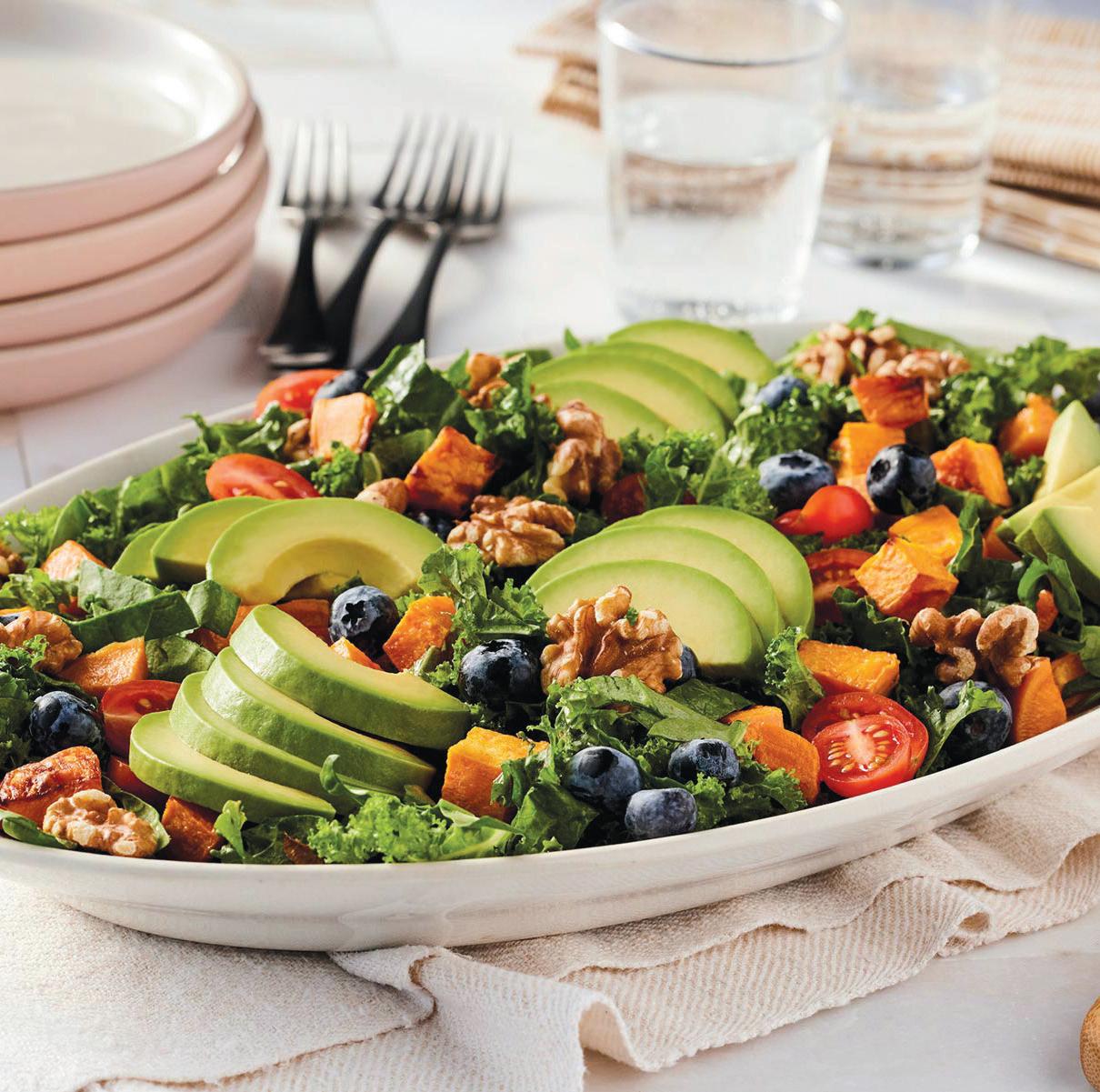
Recipes courtesy of Culinary.net

